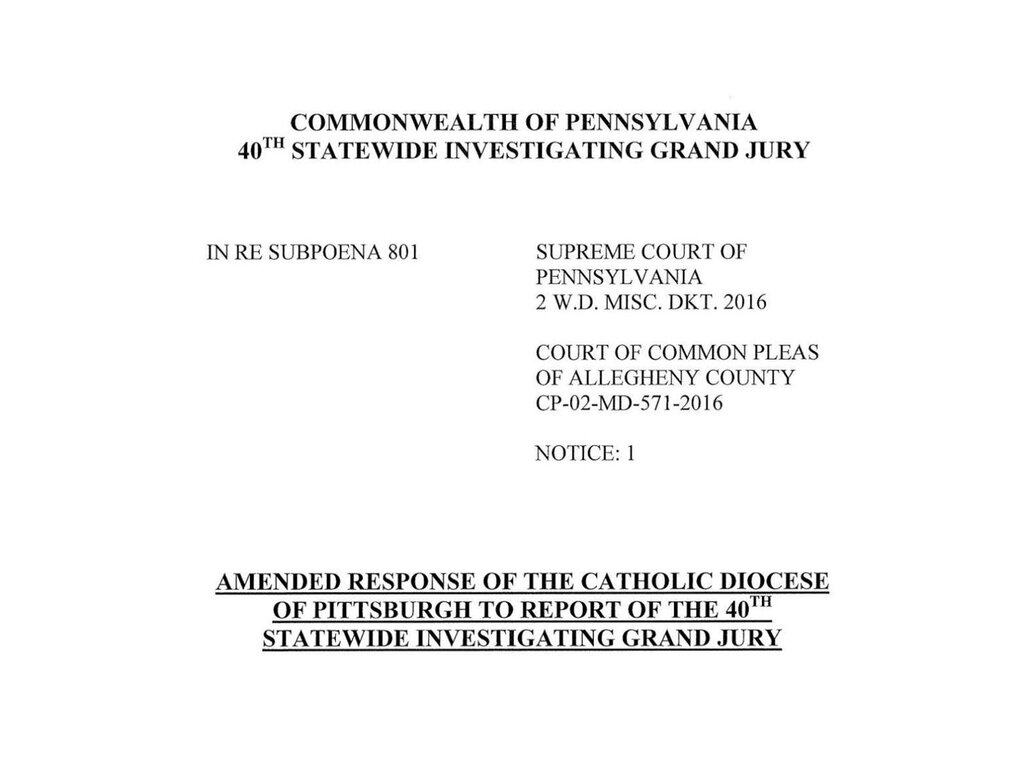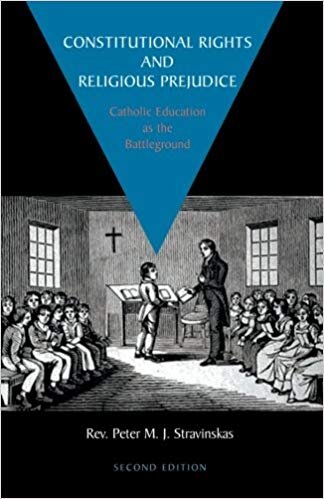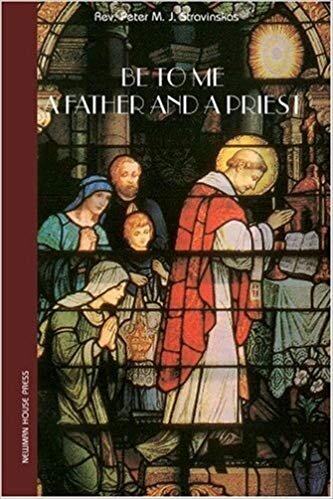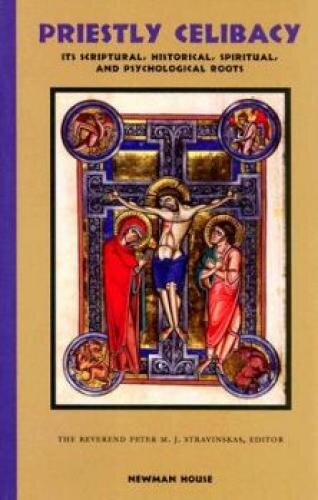Fr. Peter M.J. Stravinskas on ‘The Report Heard Round the World’
 The Pennsylvania grand jury report is misleading and had an agenda. One observer noted, “This report should not have been on a news channel, but on the History Channel.”Some readers found my article, “PA Attorney General Josh Shapiro in ‘The Reckoning’” to be explosive. If true, it deals with a subject that needs to be exploded instead of exploited. The truth is that you have not been told the truth in that now infamous Pennsylvania grand jury report. At the end of my article I suggested some further reading. I also promised that this week on These Stone Walls a prestigious guest will offer the most compelling challenge of all to the distortions you and your Church have been subjected to.It is a great honor this week to present this analysis by Father Peter M.J. Stravinskas, one of America’s foremost theologians and Catholic editors. Father Stravinskas presents a riveting and highly revealing analysis of the Pennsylvania report conducted by the Philadelphia law firm of Roca Rothberger Christie, LLP. His summary is the most concise and compelling of all the commentary I have read in these troubled days of persecution.Father Peter M.J. Stravinskas is the founder of The Catholic Answer and is currently Publisher and Editor of the superb bimonthly journal, The Catholic Response. He earned a B.A. in Classical Languages, Masters degrees in both School Administration and Biblical Theology, a Doctor of Philosophy in School Administration from Fordham University, and both a Licentiate and Doctor of Sacred Theology from the Marianum in Rome and the Marian Institute of the University of Dayton.I am so pleased to present this guest post by Father Stravinskas. His conclusion is that we must not be silent in the face of persecution. Please share this post with others.
The Pennsylvania grand jury report is misleading and had an agenda. One observer noted, “This report should not have been on a news channel, but on the History Channel.”Some readers found my article, “PA Attorney General Josh Shapiro in ‘The Reckoning’” to be explosive. If true, it deals with a subject that needs to be exploded instead of exploited. The truth is that you have not been told the truth in that now infamous Pennsylvania grand jury report. At the end of my article I suggested some further reading. I also promised that this week on These Stone Walls a prestigious guest will offer the most compelling challenge of all to the distortions you and your Church have been subjected to.It is a great honor this week to present this analysis by Father Peter M.J. Stravinskas, one of America’s foremost theologians and Catholic editors. Father Stravinskas presents a riveting and highly revealing analysis of the Pennsylvania report conducted by the Philadelphia law firm of Roca Rothberger Christie, LLP. His summary is the most concise and compelling of all the commentary I have read in these troubled days of persecution.Father Peter M.J. Stravinskas is the founder of The Catholic Answer and is currently Publisher and Editor of the superb bimonthly journal, The Catholic Response. He earned a B.A. in Classical Languages, Masters degrees in both School Administration and Biblical Theology, a Doctor of Philosophy in School Administration from Fordham University, and both a Licentiate and Doctor of Sacred Theology from the Marianum in Rome and the Marian Institute of the University of Dayton.I am so pleased to present this guest post by Father Stravinskas. His conclusion is that we must not be silent in the face of persecution. Please share this post with others.
DUC IN ALTUM: PUT OUT INTO THE DEEPOn August 14, the Attorney General of Pennsylvania, Josh Shapiro, released the findings of a grand jury investigation into cases of alleged sexual abuse of minors by Catholic clergy in six dioceses of the Commonwealth (the Archdiocese of Philadelphia was not included since it had undergone a similar review earlier). It was the report “heard ‘round the world.” Most people do not realize that a grand jury report is just that – a report, which provides details of allegations and accusations, which may or may not be true, which may or may not be prosecutable. In addition to the sensationalistic and prurient language of the report, it was released by Shapiro in such a way as to suggest that these accusations were all verifiable crimes and that they were current events. As one commentator put it, this report should not have been on a news channel but on the history channel.At the time of the report’s release, in various articles and in interviews, I asked why the dioceses of Pennsylvania had not gotten out ahead of its formal presentation (since they knew it was coming and likewise knew that it would lack balance and accuracy). Somewhat belatedly, but thankfully, the Archdiocese of Philadelphia contracted the services of the law firm Lewis Roca Rothgerber Christie LLP to provide a professional analysis of the report. Below you will find my redaction of that analysis (shortened for space considerations), but providing its principal findings. After reading that, I would invite you to move down to some concerns and suggestions I offer for the Church in the United States (and beyond) to consider about how to proceed with further reform (yes, much reform has already occurred – although you would never know that from the way the issue is handled by the secular media).Statistical Analysis of Information Contained in theAugust 14, 2018, Pennsylvania Grand Jury ReportIn order to properly understand the import of the Grand Jury Report (the “Report”) and what the Report says about the Catholic Church in Pennsylvania, it is necessary to understand its allegations in the proper factual context. To help supply this context, this document provides a statistical analysis of the Report and provides relevant information about other studies of child sexual abuse.At the outset, it is important to note that the Report, while lengthy, is frequently vague and lacking in detail. For purposes of this statistical analysis, this document focuses on factual information related to 680 separate allegations of abuse over an 84-year period (1934 to the present). The details surrounding the remaining victims identified in the Report are so deficient (including critical facts like dates of the alleged abuse) that they could not be included in this analysis. In addition, in light of due process concerns acknowledged by the Pennsylvania Supreme Court, the Report was released in redacted form.The following facts are significant:
- The Report has not identified any priests with substantiated claims of sexual abuse of minors who are still in active ministry. While the status of several priests named in the Report remains unknown, based on follow-up reports from various dioceses, we have only been able to identify three priests accused of sexual abuse in the report who remain in ministry. These three priests are from the Diocese of Pittsburgh, and they are listed by the Diocese as people who have been accused of sexual abuse, but the allegations were not substantiated.
- Of the 680 alleged victims whose claims were tied to specific years, only 23 claim they were abused after the USCCB adopted the Charter for the Protection Children and Young People in 2002 (the “Charter”).
- The average year each alleged incident of abuse in the Report ended was 1979. Stated differently, the average incident of abuse alleged in the Report is now 39 years old.
- Much of the information in the Report has been publicly known for years.
- Of the 301 priests identified in the report as having allegedly sexually abused a minor, 140 are now deceased.
- Many of the alleged incidents of abuse occurred many decades ago. For instance, the Report references a victim alleging he was abused in the 1930s. The victim first reported the alleged abuse in 2008 when the victim was 80 years old. The accused priest was born in 1892 (the year Grover Cleveland was elected President) and was ordained in 1922. The priest was long deceased when the allegations against him were first reported.
- It is important to note that the Report includes all allegations of abuse the government found in the course of its two-year investigation, including many allegations that the Report recognized as not credible. While the media has generally claimed that all of the allegations in the Report were proven true, other reports of child abuse or child sexual abuse regularly report that only a subset of allegations are found to be substantiated:
- The 2004 John Jay report, which covered a similar time frame as the Report (1950-2002), stated that out of 10,667 alleged incidents of sexual abuse of youths, only 4,570 (less than half) were deemed substantiated.
- The Pennsylvania Department of Human Services only substantiated 10% of the 44,000 statewide reports of child abuse received in 2016. Of the 2,602 reports of child abuse in child care settings, only 7% were substantiated.
- In 2017, state authorities substantiated only 18 of the 280 (6.4%) reports of abuse filed against Philadelphia school employees.
- While the Attorney General acknowledged that child sexual abuse is a broad societal problem (expressly including schools, physicians’ offices, and public officials), and claiming an interest in eradicating child sexual abuse throughout society, Shapiro did not ask all victims of abuse to come forward. Instead, he only encouraged those who had been sexually abused by a Catholic priest to contact the “Clergy Abuse Hotline” his office has established.
- This myopic focus on abuse within the Catholic Church stands in the face of the available data, which shows overwhelmingly that the sexual abuse of minors is a much bigger problem outside the Church. This is true within Pennsylvania and nationally:
PENNSYLVANIA COMPARISONS:
- Since 2002, more than 600 school teachers in non-Catholic schools in Pennsylvania have been disciplined in connection with abuse or otherwise inappropriate behavior with children. This includes more than 50 school teachers in 2018 alone.
- In 2016, the year the Grand Jury began its investigation, the Pennsylvania Department of Human Services identified 3,078 substantiated allegations of sexual abuse during the calendar year. This is more than three times the number of total allegations against the Catholic Church (substantiated and unsubstantiated) identified by the Grand Jury over an eighty-year time span.
- The same year, Pennsylvania’s Sexual Offenders Assessment Board received 1,195 founded or indicated reports on 940 perpetrators, an 11.5% increase over 2015.
NATIONAL COMPARISONS:
- What is true in Pennsylvania is also true on a national level. Evidence shows that sexual abuse of minors is a huge epidemic that touches every major institution in society. Further, by all accounts, few institutions have done as much as the Catholic Church to learn from past failures and take steps to prevent abuse going forward.
- Nationally, 24.7% of women and 16% of men experienced sexual abuse during their childhood.
- 33% of those who sexually abuse minors are the victim’s parents; 58% are an acquaintance of the victim; 4% are strangers.
- Over twenty years, at least 368 gymnasts accused their USA Gymnastics coaches of sexual assault. Two former USA Gymnastics officials admitted under oath that the organization “routinely dismissed sexual abuse allegations as hearsay unless they came directly from a victim or victim’s parent.” USA Gymnastics “acknowledged in court records that it seldom, if ever, forwarded allegations of child abuse to police or child protective services without being asked.”
- Between 1971 and 1990, 1,151 Boy Scouts reported being sexually abused by their leaders. Over the same time-span, 416 Scout leaders were either arrested or banned from Scouting for sexual abuse of Scouts. Experts believe that the real number of abusers and victims was probably several times higher.
- Insurance companies receive around 260 reports per year of sexual abuse of a minor in U.S. Protestant churches. This annual number is more than the total accusations against Catholic clergy since 2005.
- Nearly one in ten public school students suffers sexual harassment, rape, or sexual abuse at the hands of a public school teacher.
- 290,000 students experienced some sort of physical sexual abuse by a public school employee from 1991 to 2000. By contrast, the first John Jay study found 10,677 allegations of abuse against priests and deacons over a much longer time-frame, 1950 to 2002. Based on these numbers, the study’s author said that “the physical sexual abuse of students in schools is likely more than 100 times the abuse by priests.”
- By way of contrast, in 2017 the USCCB’s independent auditor found only 24 allegations that current minors were sexually abused, only six of which were substantiated by the close of the audit cycle.
Having an objective review of that most damaging grand jury report, we should be able to come to some conclusions and a plan of action.While we must condemn any sexual abuse of vulnerable people by clergy (or anyone else), a few points need to be made. First, since 2002, it is fair to say that the safest place for a child to be is in any Catholic institution – and the statistics bear this out. In this regard, see the excellent article published on December 2nd by The Media Report which notes, among other statistics, that in less than three months, the Chicago Public Schools office has received over 600 allegations of sexual abuse. Now, in fairness, an allegation is just that. However, even if we take half that number, we are left with a monthly average of 100 abuse allegations in just a single public school system (see “Sex Abuse in Chicago Schools”).Indeed, the Church could offer valuable counsel to all kinds of organizations on how to protect minors from sexual predators. Second, it is patently unfair to accuse Church officials of “coverup” due to confidentiality agreements. In point of fact, when an out-of-court settlement is reached, a confidentiality agreement is standard procedure. Readers of TCR will recall that I have consistently opposed out-of-court settlements for a variety of reasons, however, if that route is taken by a victim’s legal team, then one should not balk at it years later.Presently, attention is focused on episcopal accountability. In 2002, when the United States Conference of Catholic Bishops promulgated the so-called “Dallas Charter,” a notable absencefrom the Charter’s sanctions was the bishop. That lacuna is now being addressed, both in terms of episcopal sinful and criminal activity and episcopal nonfeasance (that is, failure to deal withabuse problems according to the norms of both civil and canon law).Suggestions (and demands!) have come from all quarters. Some of these have been very thoughtful and helpful. Some have been well-intentioned but misguided. Some who have advanced remedies have a distinctly anti-clerical and even anti-Catholic bias; they are not reformers but revolutionaries, out for red meat. We need to remember that revolutions never end well. Anger and a hidden agenda spell doom for any possible good that could emerge.“Off with all their heads!” is neither human nor Christian. That mentality has caused not a few innocent priests to be unfairly tried in the court of public opinion since 2002; regrettably, very few bishops have come to their defense out of fear of bad press. Now, some of those same people are coming after the bishops, predictably. One of the “reforms” put forward is that oversight of accusations of clerical abuse (whether by priests or bishops) be handed over to civil authorities. Is this something we really want? Let’s consider the prospects for justice.– As you should have seen from the very detailed analysis of the Pennsylvania grand jury report above, the goal was not justice; slander, scandal and defamation were. Interestingly, that same Attorney General has now shown his hand completely by filing a challenge to President Trump’s final religious exemption rules, which guarantee freedom of conscience. Shapiro also continues his legal harassment of the Little Sisters of the Poor.– In every jurisdiction where the statute of limitations has been rolled back, the only entity to come under the gun has been the Catholic Church. Jurisprudence has valued the statute of limitations for centuries for very good reasons. If, however, it is revoked or set aside for a period of time, why is that window of opportunity for litigation not extended to all potential institutions harboring abusers, starting with the public schools?– The unbelievably biased procedures against Cardinal George Pell in Australia, violative of all principles of fairness and transparency, give new meaning to “kangaroo court.” Such judicial behavior has not been limited to “the Land down Under”; we have had numerous examples of it here in the United States. As Arthur Schlesinger asserted, “Anti-Catholicism is the deepest-held bias in the history of the American people.”If society-at-large and legislative bodies, along with judiciaries, were truly concerned with the welfare of minors, their laser would not be exclusively focused on the Catholic Church. The real goal, of course, is to discredit the Church’s moral standing since hers is nearly the only voice raised in the culture wars – speaking out in opposition to abortion, same-sex unions, euthanasia, and further drifts into secularization.A well-regarded motto urges: “Ecclesia semper reformanda” (The Church is always in need of reform). Reform, not revolution. Luther’s initial challenges were for reform; he and his movement descended into the realm of revolution, throwing out the baby with the bath water. Genuine reform must be grounded in a true love for the Church and in rational proposals that take all dimensions of a problem into account. Lay review boards for clerical abuse have functioned very well for the past seventeen years; a variation on that theme for episcopal accountability should do as well. St. Thomas à Becket, St. John Fisher, Cardinal Mindszenty and Cardinal Stepinac didn’t do very well at the hands of civil authorities. We need to learn from history, lest we repeat its mistakes.Most of you good readers are not blogging your discontent; you are too busy leading a Gospel-inspired life. When the Church is unfairly targeted (unfairly, not fairly), you need to raise your voice in her defense. You should also give strong support to good priests and bishops (who are in the majority). Last but not least, you must pray for the purification of the Church in her head and members – a painful but necessary process that must take place in every age. If you do these things, you will duc in altum.Father Peter M. J. StravinskasEditor and PublisherNote from Father Gordon MacRae: I am deeply grateful to Father Peter M.J. Stravinskas for this heroic effort. For the last ten years since These Stone Walls began he has provided me with a complementary subscription to his outstanding bimonthly journal, The Catholic Response which I highly recommend to TSW readers interested in solid commentary on theology and Catholic life. You can subscribe to is wonderful publication in either print or digital form at “The Catholic Response.”It is clear that mainstream media can no longer be trusted to cover this matter with justice, fairness and accuracy. So please share this Post. You may also want to visit these other contributions from some journalists of integrity and courage:
- Kicking the Dead and Collecting Cash by David F. Pierre, Jr [TSW]
- The Legacy of Billy Doe by Ralph Cipriano [Catalyst]
- Spotlight Oscar Hangover: Why Spotlight Is a Terrible Film</a> by JoAnn Wypijewski [Counterpunch]
- The Trials of Father MacRae by Dorothy Rabinowitz [The Wall Street Journal]



